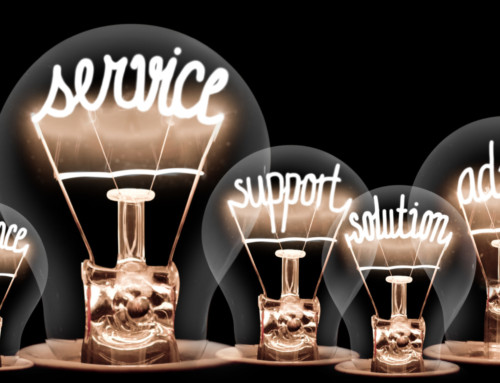What Is Direct Response Marketing?
There are two major types of marketing strategies. The first is known as mass marketing or “branding”. The goal of this type of advertising is to remind customers and prospects about your brand as well as the products and services you offer. The idea is that the more times you run ads from your brand, the more likely people are to have this brand at the top of their consciousness when they go to make a purchasing decision. If you’ve seen the ads from major brands such as Coca Cola, Nike and Apple you’ve experienced “image” marketing. The vast majority of advertising falls into this category.
There’s no doubt that this type of marketing is effective, however it is very expensive to successfully pull off and takes a lot of time. It requires you to saturate various types of advertising media e.g. TV, print, radio, Internet etc. on a very regular basis and over an extended period of time. The expense and time involved are not a problem for the major brands as they have massive advertising budgets and product lines are planned years in advance. However, a problem arises when small businesses try to imitate the big brands at this type of marketing. The few times they run their ads is like a drop in the ocean. It’s nowhere near enough to reach the consciousness of their target market who are bombarded with thousands of marketing messages each day. So they get drowned out and see little or no return for their investment. Another advertising victim bites the dust. It’s not that the small businesses aren’t good “branding” or mass media ads. It’s that they simply don’t have the budget to run their ads in sufficient volume to make them effective. Unless you have millions of dollars in your marketing budget, you have a very high probability of failure with this type of marketing.
Direct Response Marketing
The second type of marketing strategy is called “direct response”. Direct response marketing, is designed to evoke an immediate response and compel prospects to take some specific action, such as opting in to your email list, picking up the phone and calling for more information, placing an order or being directed to a web page. So what makes a direct response ad? Here are some of the main characteristics:
- It’s trackable.
That is, when someone responds, you know which ad and which media was responsible for generating the response. This is in direct contrast to mass media or “brand” marketing – no one will ever know what ad compelled you to buy that can of Coke, heck you may not even know yourself. - It’s measurable.
Since you know which ads are being responded to and how many sales you’ve received from each one, you can measure the exact effectiveness of each ad. You then drop or change ads that are not giving you a return on investment. - It uses compelling headlines and sales copy.
Direct response marketing has a compelling message of strong interest to your chosen prospects. It uses attention grabbing headlines with strong sales copy that is “salesmanship in print”. Often the ad looks more like editorial than an ad (hence making it at least three times more likely to get read). - It targets a specific audience or niche.
Prospects within specific verticals, geographic zones or niche markets are targeted. The ad aims to appeal to a narrow target market. - It makes a specific offer.
Usually the ad makes a specific value-packed offer. Often the aim is not necessarily to sell anything from the ad but to simply get the prospect to take the next action, such as requesting a free report. The offer focuses on the prospect rather than on the advertiser and talks about the prospect’s interests, desires, fears and frustrations. By contrast mass media or “brand” marketing has a broad, one size fits all marketing message and is focused on the advertiser. - It demands a response.
Direct response advertising (pay-per-click advertising) has a “call to action”, compelling the prospect to do something specific. It also includes a means of response and “capture” of these responses. Interested, high probability prospects have easy ways to respond such as a regular phone number, a free recorded message line, a web site, a fax back form, a reply card or coupons. When the prospect responds, as much of the person’s contact information as possible is captured so that they can be contacted beyond the initial response. - Multi-step, short-term follow-up.
In exchange for capturing the prospect’s details, valuable education and information on the prospect’s problem is offered. The information should carry with it a second “irresistible offer” – tied to whatever next step you want to prospect to take, such as calling to schedule an appointment or coming into the showroom or store. Then a series of follow-up “touches” via different media such as mail, e-mail, fax, phone are made. Often there is a time or quantity limit on the offer. - Maintenance follow-up of unconverted leads.
People who do not respond within the short-term follow-up period may have many reasons for not “maturing” into buyers immediately. There is value in this bank of slow-to-mature prospects. They should continue hearing from you once to several times a month.
Money At A Discount
Direct response marketing is a highly ethical way of selling. It’s focused on the specific problems of the prospect and aims to solve these problems with education and specific solutions. It is also the only real way for a small business to affordably reach the consciousness of a prospect.
Your marketing system must deliver profitable results.
You have to know what a customer is worth to you, and then decide what you are reasonably willing to invest to acquire one, and then build systems that work within that limit. Direct response is an accountable way to run marketing for a small business, as it is highly focused on return on investment. If $10 bills were being sold for $2 each, how many would you buy? The name of the game with direct response marketing is ‘money at a discount’ e.g. $2 into advertising to get $10 out in the way of profits from sales. When you turn your ads into direct response ads, they become lead generating tools rather than just name recognition tools.
Allan Dib
– See more at: http://successwise.com/what-is-direct-response-marketing#sthash.vXnWVWji.dpuf







Share Your Thoughts?